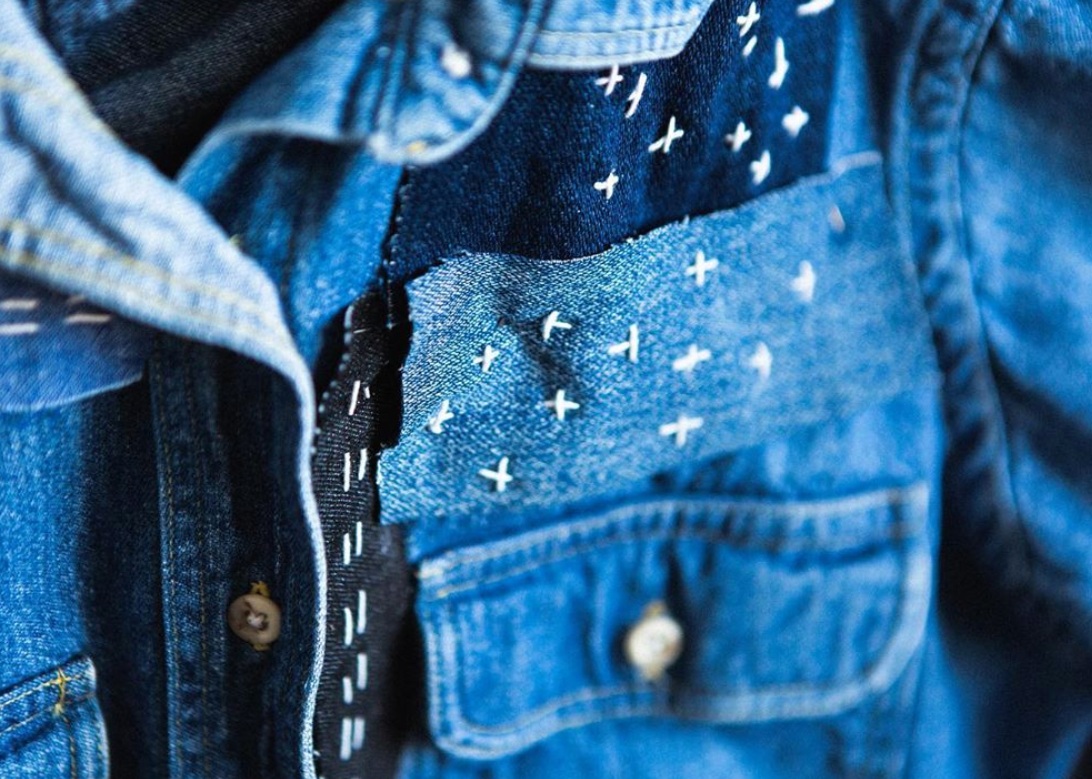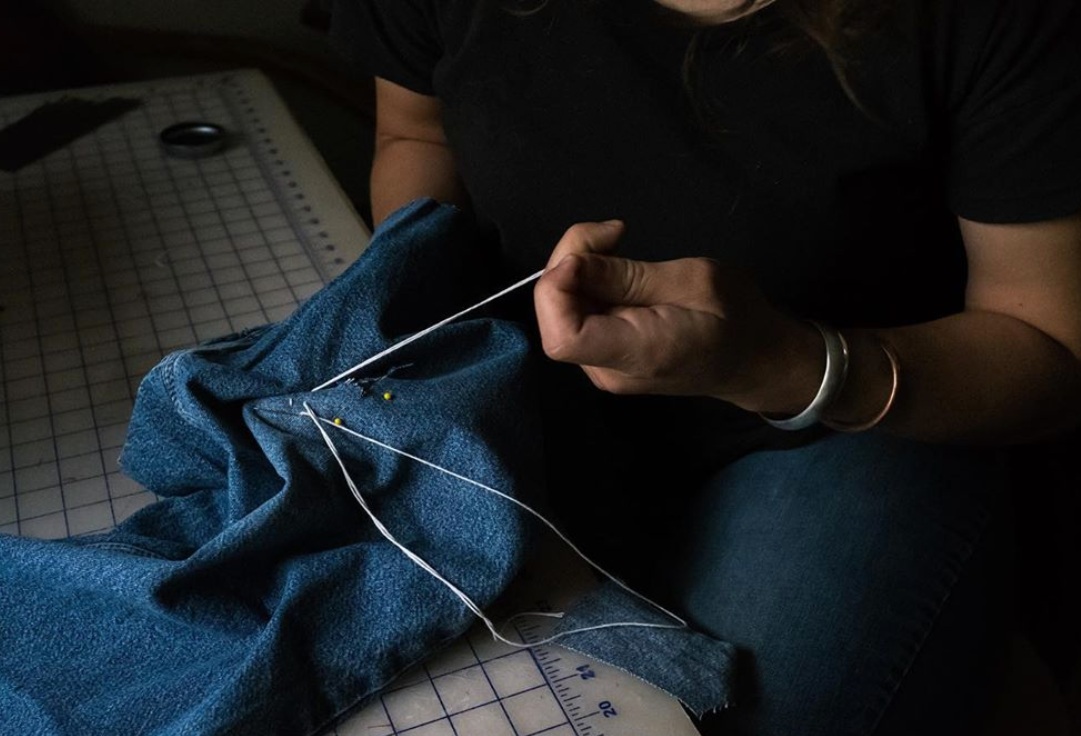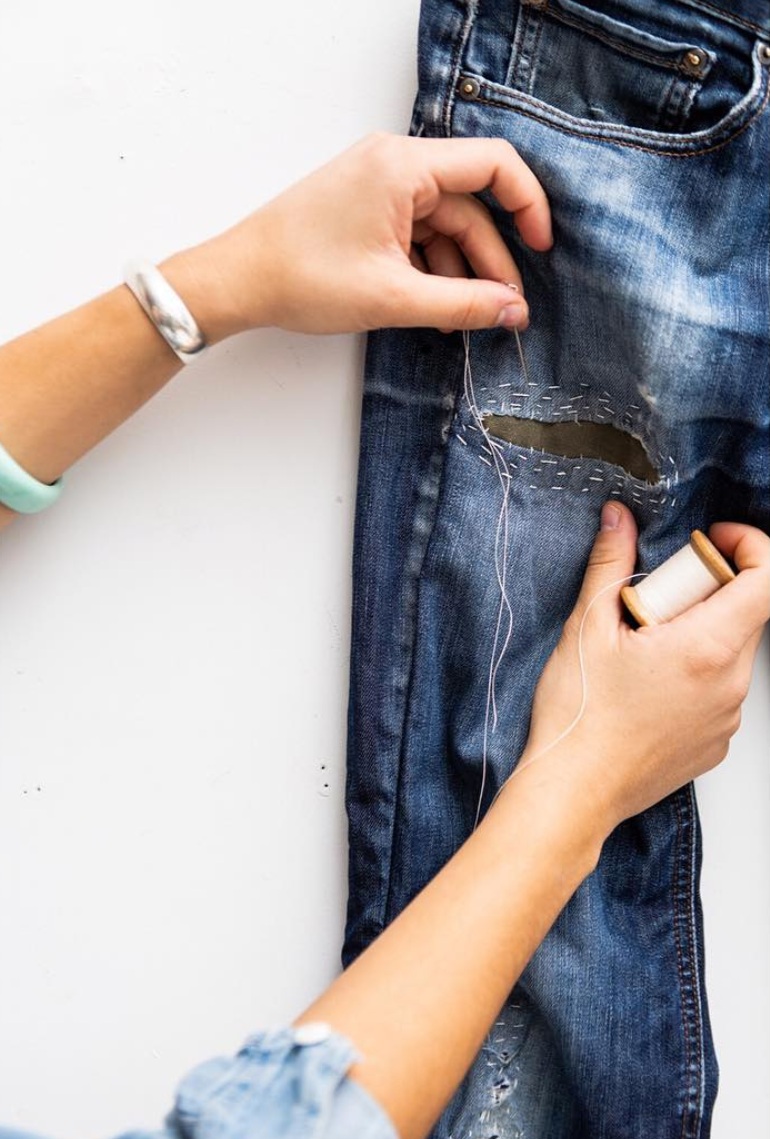Individual Expression through Mending with Lauren Callis Erickson
Artist Feature: An Upcycled Closet | Lauren Callis Erickson
Hi, Lauren! So excited to chat with you today. Can you tell us a little bit about you and your background?
I am trained in the disciplines of painting and fiber arts. I got my undergraduate degree from UW-Superior and masters of Art Therapy from the School of the Art Institute of Chicago. While practicing art therapy, I started a small business, An Upcycled Closet, to encourage a circular economy and minimize the impact of textile waste on our planet. I sort of refuse to pick a lane and generally get distracted by my curiosities, especially in the creative world.
What is your background and how did you find your way to starting An Upcycled Closet?
My background is in painting. I was making a lot of pieces that would bring me joy during the creative process, but inevitably would accumulate around my house once they were done. There is only so much wall space one can fill…
In grad school I focused more on fiber arts and began valuing garments and textiles as an art form just as much as I had painting. The functionality of garments was appealing and led to an examination of the textiles used and environmental impact of the fashion industry. As my passion grew for repurposing materials and reducing my environmental footprint, I sought qualified research to support sustainability and the most effective ways of conveying this information to others. In my graduate studies, I chose to write my thesis on how art therapists could use second hand materials in their practice. This slowly led to me feeling confident in telling others about what I was learning in a more accessible way.
“What stemmed from frugal and self-expressive shopping at thrift stores, quickly turned into a critical eye of the clothing industry.”
When did you first discover visible mending and what does it mean to you?
I was introduced to Sashiko stitching in graduate school in a fiber studies class. I had always used hand stitching in artwork with embroidery and embellishment as the focus. Visible mending allowed for their to be creative expression but also a functionality that I was seeking in my art at that time.
Have you always been interested in vintage or thrift, or was this something you discovered later in life?
I switched to buying solely secondhand sometime in college. What stemmed from frugal and self expressive shopping at thrift stores, quickly turned into a critical eye of the clothing industry. I enjoyed extending the life of garments and learned a lot about the demand our need for “new” clothing, home goods, etc, contributes to waste and leads to lesser quality lives for the ones making it as well as our planet.
How do you see yourself living your values through your work? How (if at all) do you talk about sustainability to your friends or followers?
Sustainability is an integral part of my work. However, I have grown more careful in how I talk about it. When we are passionate, we want to yell and make change happen quickly. While sometimes yelling is required, it doesn’t always lead to lasting change (especially when it is a complex behavior). Yelling can often turn people away from changing their behaviors.
Various model of decision making agree that long-lasting change must start with awareness. I would love to scream about how the world is burning with each post and urge change at the top of my lungs, but fear sparks a different response. They must start with awareness of the options available to them and the realistic areas of their lives that they can fix first.
Describe the artist and makers community that you work in. What do you love most about Minneapolis, or the Midwest in general?
I participated in the Shaping Fashion Forum event hosted last spring and was overjoyed by the community that unfolded. Something truly special happens when folks are learning and shopping in the same setting. It showed a beautiful and realistic picture of a circular and informed shopping economy.
What are some of the biggest challenges you face as an artist and maker? Does your focus on sustainability add any barriers?
Sometimes my knowledge base can feel limiting. I often want to make something that requires a new skill set before I am able. I am always working and hate when my hands are idle. However, the creative process sometimes requires research, planning, and learning before the analog part. This is especially true when trying to make art in the most sustainable or mindful way. Patience is always a skill I am working on!
“Mending, repair, and secondhand purchases are all responsible ways to make an impact that everyone should be doing, especially those who have the ability to.”
As an artist in the ‘repair space, are there any misconceptions about thrift, secondhand, or mending that you see? What do you wish people knew more about?
There can be a misconception that mending, recycled, and repurposed fashion are for people that “need it”. Not only is this a sorely mistaken idea, it creates an association from folks that can “afford” new clothes are off the hook for being mindful about what they wear or consume. Mending, repair, and secondhand purchases are all responsible ways to make an impact that everyone should be doing, especially those who have the ability to.
While sustainable fashion is still a relatively new idea to many people, what do you think is going well? What do you love most about the movement?
I’ve observed a lot of people find the individual expression of secondhand clothing and visible mending emboldening. It’s fun to see folks dress in their own unique ways. It makes me excited to see what will come!
What do you see as the biggest challenge or opportunity for the fashion or makers industry that you’d like to see changed?
I would say the biggest challenge comes back to the industry’s focus. Is the focus on people (ie. the makers, the farmers, the factory workers, etc) or is it on the bottom line and how much money the line/product can make them.
What is one thing you can’t get enough of right now? Are you following anyone that we should know about?
I’ve enjoyed listening to the podcast Without Fail this summer. Alex Blumberg talks with business owners and entrepreneurs, to understand how their failure helped shape them. I find it very encouraging!
What is your next project or work that we can look forward to?
I am currently working on launching an adult creative learning studio with my bud Ashley Mary. We both love the creative process and want to encourage others to make things, mess up, and return to incorporating play in their lives.
Follow the work of Lauren Callis Erickson and An Upcycled Closet online @anupcycledcloset. Or connect with her in person at one of her workshops or open studio hours in Minneapolis’ Northrup King Building.
Photography by @bmsuerth, @gracekbeck, @lacallis, renee.jones@startribune.com







